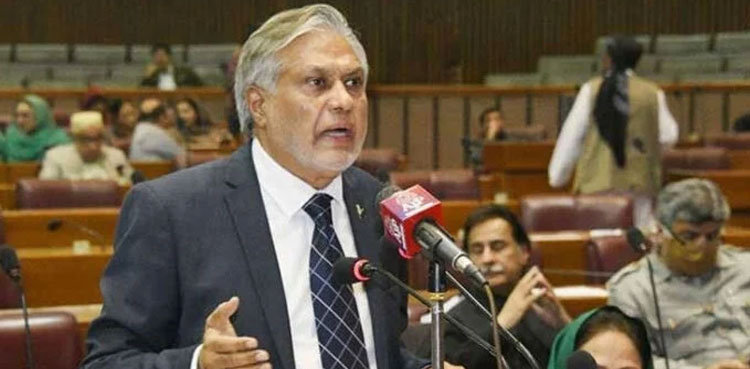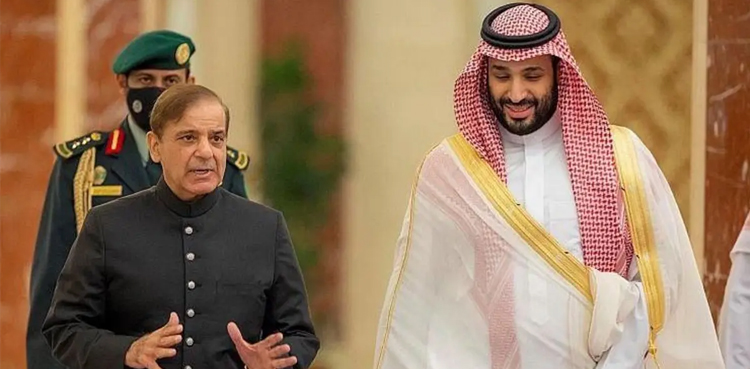The flustered economic managers of the coalition government heaved a sigh of relief when the IMF finally agreed to extend financial assistance to cash-strapped and badly governed Pakistan.
It was very clear that the entire viability of the state depended upon the IMF bailout and so did the credibility of the people who are running it. Though the incumbent finance minister did not hesitate to keep up his hollow bluster but it was also clear that his very capability as an economic operator is badly dented and may not recover.
The fact of the matter is that the limited-time and assistance bailout speaks volumes about the intense trust deficit between Pakistani government and the IMF and it does not appear to subside as the economic management practices of the country remain opaque and interest-ridden.
By throwing a tentative bridge the IMF has given a message that it may be the end of the rope for the country unless fundamental changes are brought about in the fiscal and monetary system of the country. It is very obvious that the menace is deeper and the current economic managers are simply not equipped to grapple with it and what is needed is a vast consensual exercise aimed at addressing the underlying causes of the malaise the country is gripped with.

Though the IMF assistance came as a much-needed relief yet it has come with tremendous restraint exhibited by the international lender. The IMF clearly baulked at approving the request made by they Pakistan to complete the ninth review of the recently expired EEF facility and release the $1.2 billion tranche stuck for months.
Instead the IMF preferred to bring about a fresh approach and entered into a short-term Stand-By Arrangement structured for a nine-month period to help save the teetering economy.
This is certainly not a good omen and reflects that the IMF considers Pakistan to be a border-line case from falling into much-dreaded sovereign default. This is a red flag for Pakistani policy makers but the problem actually is that they keep on believing that something extraordinary may take place and retrieve the situation for them.
They should take cognizance of the fact that the IMF has consistently pointed out to policy missteps and has often aired their views that were pretty shocking as mostly international financial donors are very tightlipped about their dealings with receiving countries.
The crux of the matter is that Pakistani economy plagued with high inflation, drying dollar inflows and macroeconomic instability may surely take a long time and sustained fiscal discipline to turn around and the IMF is extremely doubtful.

Another aspect of this agreement relates to the conjecturing doing rounds that what was needed to clinch the deal was American blessing. It is now reported that the US played a key behind-the-scenes role to help secure the deal after an extremely unusual delay of eight months.
It is also reported that the American support has come with the condition that the reforms agreed with the IMF are required to be implemented. In this respect it was noted that high level Pakistani officialdom remained in constant touch with American departments of treasury and state along with some influential American lawmakers.
The other impact of the IMF deal was an instant recovery in the value against the dollar gaining over Rs.10 in interbank market. The registered increase was 3.93 per cent and it is expected that the rupee rally will continue but critics also point out that the recovery may be short lived keeping in view the multiplicity of negative facts lined against it.
It was reported that there were only sellers and no buyers for dollars were available. In fact, the open market has lost most of its business with banks due to the State Bank of Pakistan’s decision allowing banks to purchase dollars from the banking market instead of exchange companies.
It is also pointed out in this context that the central bank will be instrumental in guiding the currency levels thereafter and once the process is set in then those who were hoarding dollars will panic once foreign exchange reserves start building.
And once this happens, then increase in remittances through banking channels will take place as senders would not take risk of remitting their money via hundi-hawala market.
Despite the IMF agreement the financial rating agencies are not optimistic about its overall salutary effect on the economy. In this context both Moody’s Investors Service and Fitch Rating have warned that Pakistan will require significantly more funds than what it is receiving from the IMF to meet its debt maturities and to finance its economic recovery.
They point out that Pakistan has to repay $25 billion in the current fiscal year to meet its debt obligations and the repayments include both principal and interest constituting about seven times Pakistan’s foreign exchange reserves.
They have also noted that the new programme still needs the approval by the IMF Executive Board that may evaluate that Pakistan will require significant additional financing besides the IMF disbursements to meet its debt maturities and finance an economic recovery.
While the IMF likely sought and received assurances for such financing, there is a risk that this could prove insufficient, particularly if current account deficits widen again. It was mentioned by analysts that though Pakistan increased taxes, hiked key interest rates to an all-time high and cut spending to secure the initial pact with the IMF yet it is uncertain that the Pakistani government will be able to secure full $3 billion of IMF financing during the nine-month Stand-By Arrangement.
It is also noted that it is not clear whether Pakistan will join another IMF programme but it is almost clear that until a new programme is agreed, Pakistan’s ability to secure loans from other bilateral and multilateral partners on an on-going basis over the longer-term will be severely constrained.
In May, Fitch reported that Pakistan was required to pay $700 million of maturities in May and another $3 billion in June adding that $2.4bn of deposits and loans from China would be rolled over to meet the obligation. Rating agencies warned in May that Pakistan could default or do debt restructuring if it did not get IMF’s support.
The consensual opinion of economic experts is that the issue is simply not default but its terrible consequences for the people of Pakistan who are left almost completely at the mercy of foreign assistance.
They mention that the Stand-By Agreement is a better deal as it ends the uncertainty around fiscal discipline before and after the elections, with fears of an immediate sovereign default receding as reflected by the rapidly surging prices of Pakistan’s short-duration eurobond debt becoming due in 2024 and 2025.
But macroeconomic stability will not come free as the IMF demands that energy and foreign exchange market reforms be implemented and the State Bank must pursue a proactive monetary policy.
The success of the temporary reprieve depends upon Pakistan strictly executing Budget 2023-24 and not ceding to pressure for unbudgeted spending and tax exemptions.
It is obvious that an economy plagued with high inflation, drying dollar inflows and macroeconomic instability takes a long time and sustained fiscal discipline to turn around. This is where the political al elitism coupled with economic entitlement has brought the country to.









